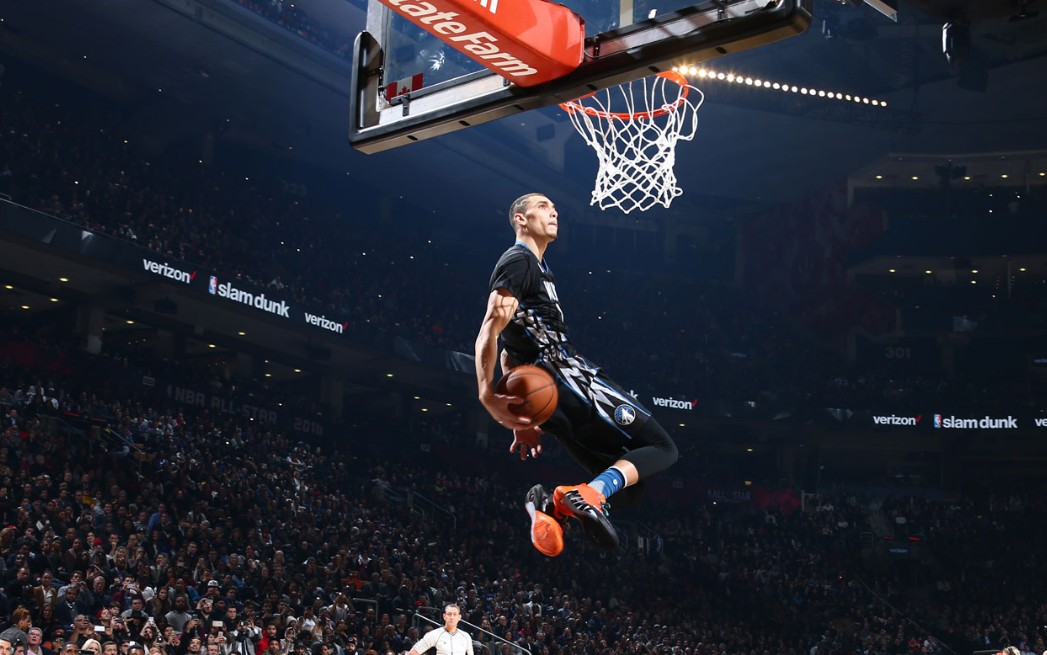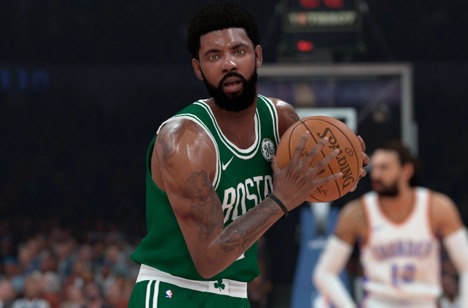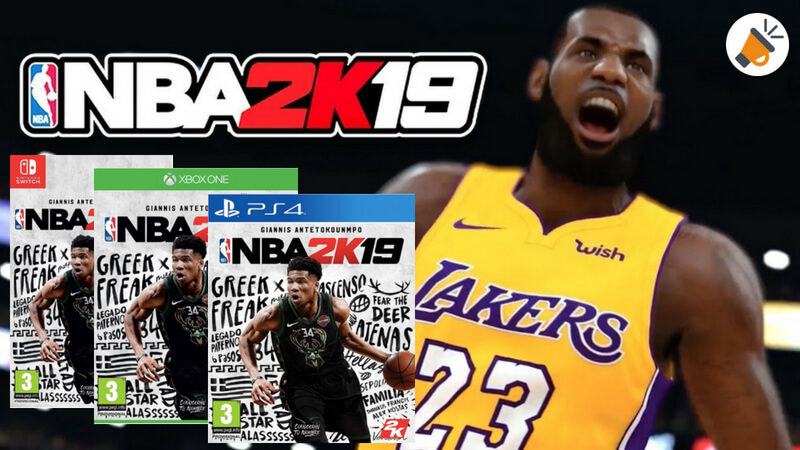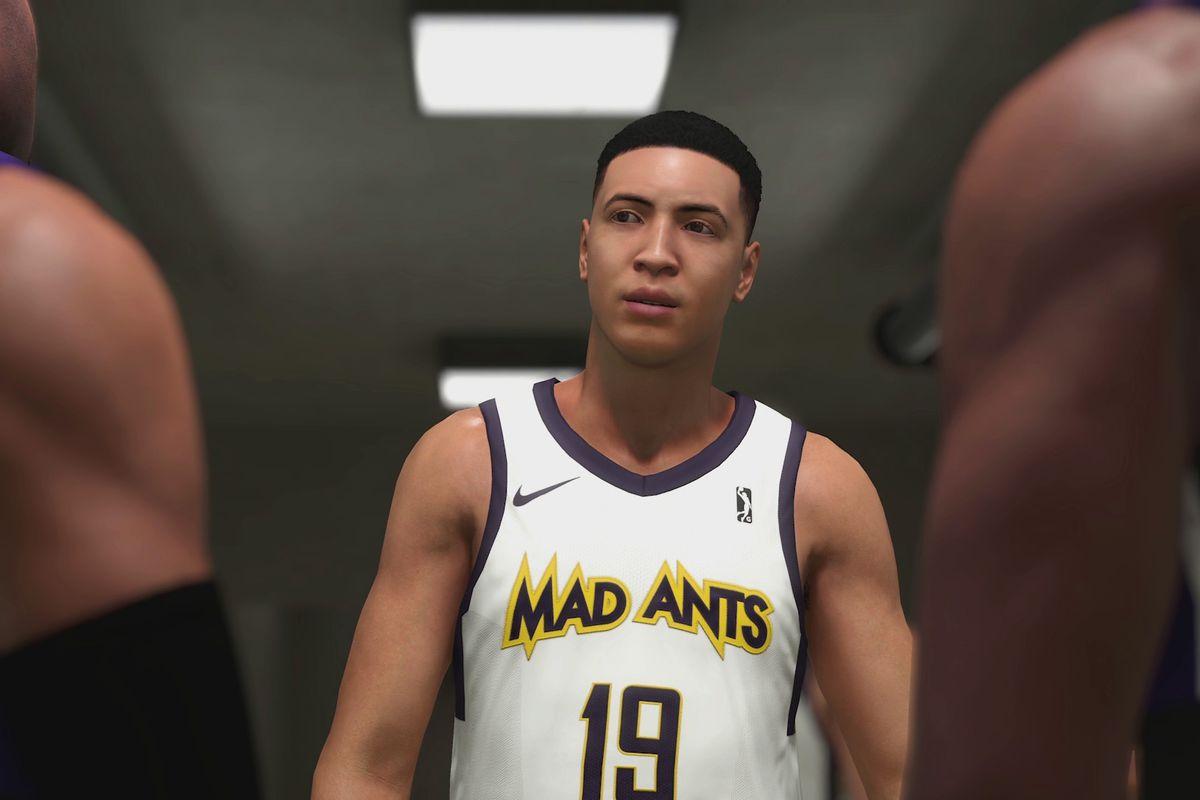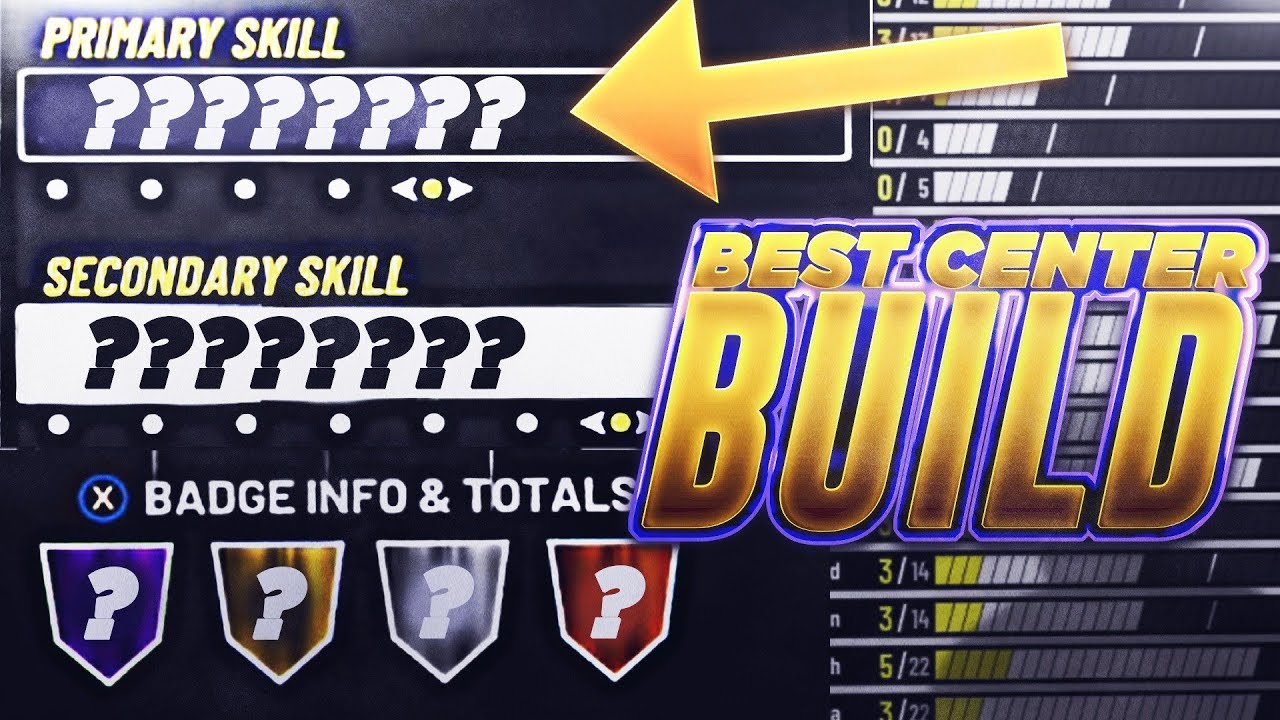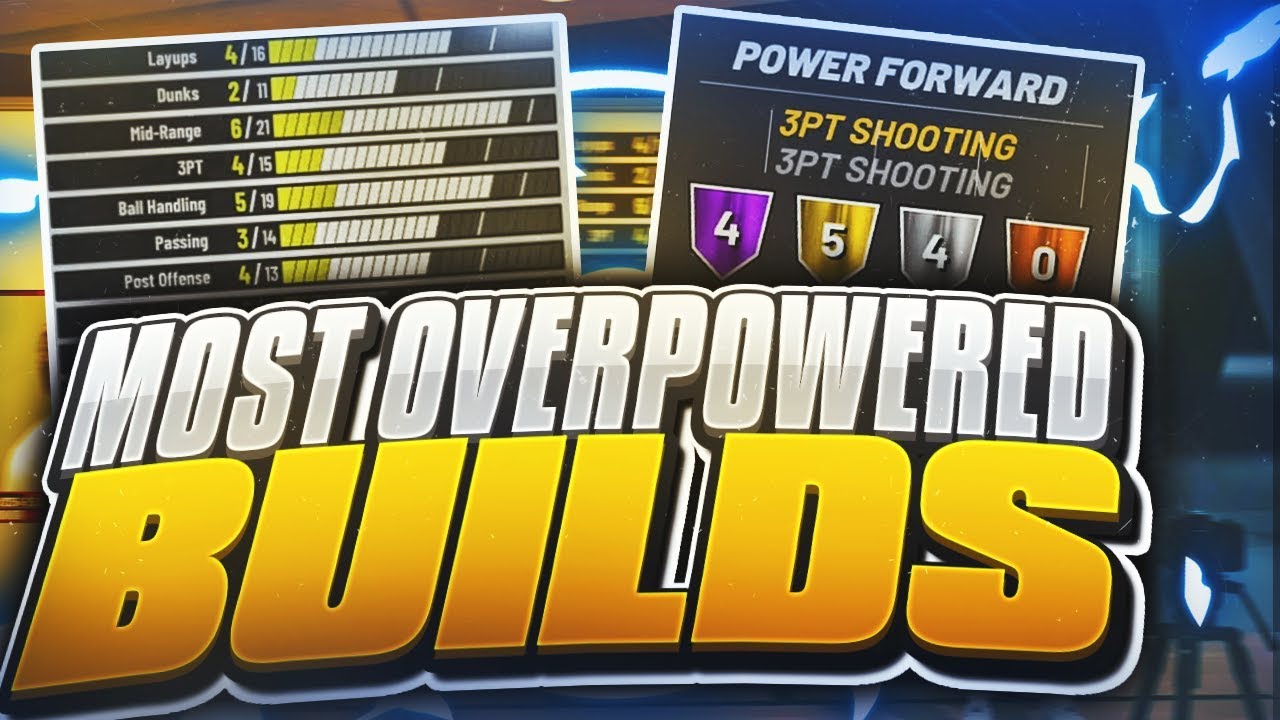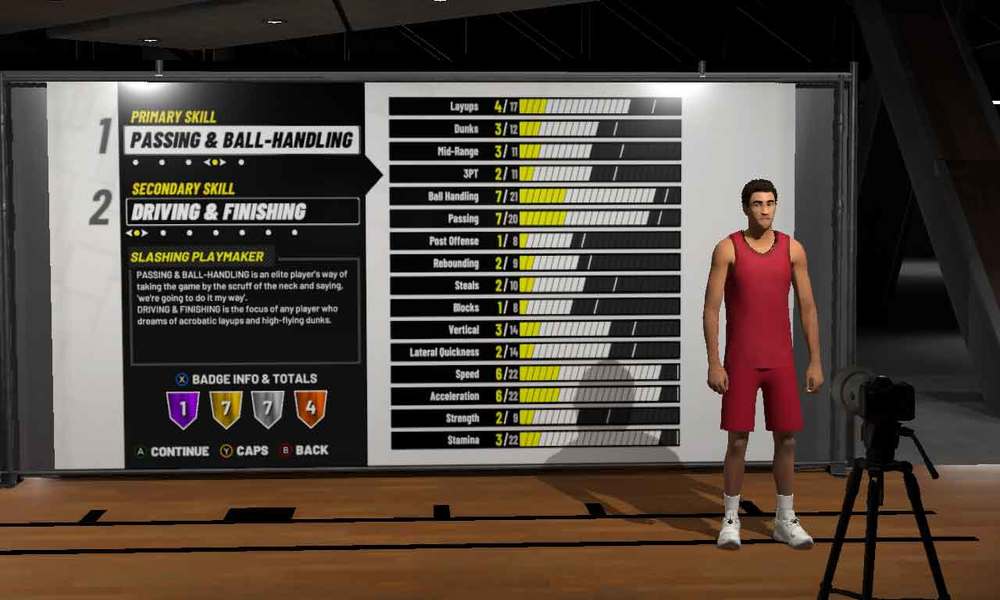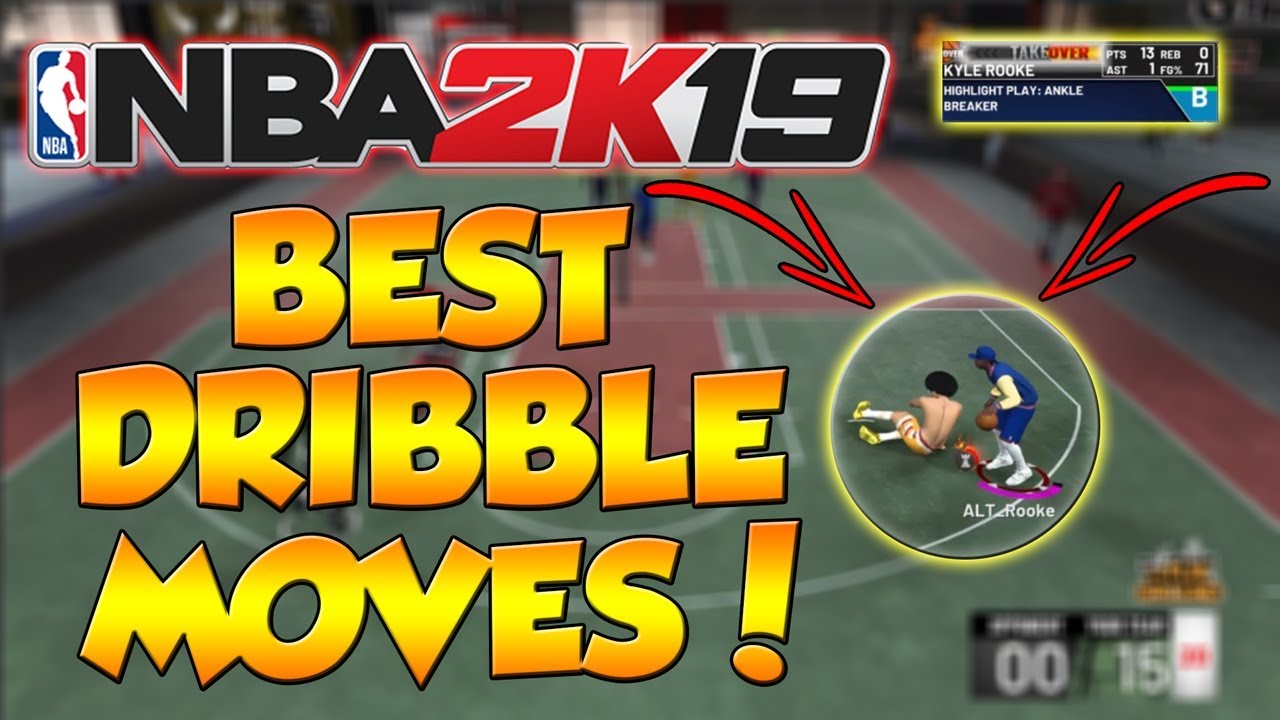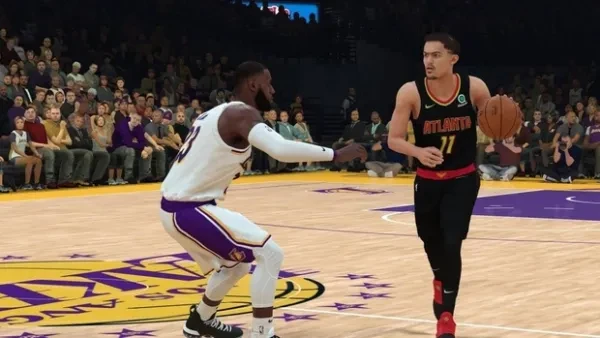
MyLeague is a ridiculously fun and complex simulation in which you take control as the General Manager of a team while also being allowed to play as that team (unlike MyGM mode). But, being a good General Manager of an NBA team is basically as difficult as it sounds. Here are some tips to get you started no matter what team you’re on, from the Warriors to the Suns.
Find A Star Player
The first thing that any team needs is to find a star player. Unless you know how to develop the perfect system of players (if so, you can just skip to the next section) almost every team needs at least one star player to get them to the NBA Finals. Most teams already have a franchise player, and if not, you’re gonna want to look for one. Here are some tips on how to recognize and acquire a Star Player for your team:
- Other than the most obvious thing you can build your team around—a scorer—there are other types of stars out there that can lead you to a title. Sometimes having an extremely high stat per game, other than scoring, can be a great player to build around, such as a high assist point guard or high rebound big man, which are both vital positions for any team.
- Age is going to be a BIG factor in choosing your franchise player. Most likely, you don’t want to pick someone over 30 years old to be the player you build around, as you won’t have many prime years with them, or time to develop them into your system.
- Pay big attention to the potential of your player here, I will go into more detail about this later, but often a young player with an A> potential will be far more valuable than an older player with B level potential, even if they’re already a proven player in the league.
- If you don’t already have a franchise player, you have some options. The first is simply trading, and you can do this most likely by offering up some future 1st round picks. If you want a franchise player in your first season, this is most likely going to be your only option; trade your best player and a pick (or two) for that star player.
- The next is to tank your first season or two and pick up a good pick in the draft. If you’re really smart, you’ll be able to trade for some future picks, but we’ll get more into drafting later.
- Your last option is going to be to pick up a star player in free agency. This is probably the most difficult and takes the most planning, by trading away or cutting your big contracts, and opening up the cap space to sign the player. Also, stars usually do not reach free agency until they’re around 28 years old, so you won’t be able to aquire young talent this way. And, you have to be sure that they’ll be a free agent. We’ll talk about that more later too.
Here are some of my recommended franchise players based on my experience with the game, that aren’t as obvious as Jayson Tatum or Ben Simmons:
- Lonzo Ball: Help this kid out with shooting and he’ll help you out by leading the league in assists, and for a long time too. We all know his shooting is atrocious, but in real life he averages 6 assists per game for his career and if you invest in him early, he can get a solid 10ppg and 10apg. With shooters in the corner and a big man that he can run the pick and roll with, he can become a centerpiece of any organization.
- Michael Porter Jr.: Porter Jr. has a mean jumpshot on him and a great build for today’s league. If you work on his durability (the obvious injury) and give him time to develop, he’s a future all-star and can get close to 30ppg in his prime.
- Devin Booker: Booker is a proven and reliable scorer in a horrible franchise. With the addition of DeAndre Ayton, the Suns have a lot of potential, but if you pull Booker out of Phoenix, you’ll have a lot of options in building around him and creating a system to optimize his playstyle.
- Trae Young: NBA 2k19 loves Trae Young. In my experience with the game I’ve seen Young win Rookie of the Year, Most Improved Player, MVP, and Finals MVP after playing many, many, many franchises. He consistently breaks 90 overall and is easy to build around. His three-point shooting spaces the floor and his passing ability makes him one of the best offensive players in the game.
Develop a System
The next step involves a little bit about coaching but mainly decides what kind of role players you need to compliment your star player. This ultimately boils down to a case by case basis, but here are some tips to get going:
- So, you have your star player and now you have to figure out how to fill out the rest of your roster. First, you’re going to need to analyze what your team has and doesn’t have; so go ahead and take a look at those player stats. However, here are some role players any team can use.
- If your star player is a strong scorer, here’s some archetypes to look for that can’t do you wrong: a sharpshooting guard to space the floor, a playmaking guard to get the ball down the floor and to your scorer, a defending forward to lock down top scorers, a rebounding and inside scoring forward, and an inside defending and rebounding center. Obviously, you’ll replace one of these with your star player but this is a proven winning build.
- Something else to keep in mind is that sometimes these archetypes are found in an untraditional position for it, such as a high playmaking forward. Then, you’re going to have to re-evaluate what your team needs. Don’t be afraid to try a completely different system when you know it will work.
- The next thing you need to do is actually pick a system. Under the coach setting, the game shows you how proficient your offensive system is. Even if you have a bad coach, if you have the right system with the right players, your offense can thrive.
- Another thing that can get easily overlooked is defense. Your team can score 110ppg and still lose if you’re giving up 115ppg. This is much more difficult to analyze in your player stats if you don’t have a great understanding of advanced stats. You can simply look at steals and blocks per game, however, players can often have a big defensive presence without putting up big numbers.
- You might just have to play with your team and see what their defense is like. A good idea is to have at least one player whose sole purpose on your team is defense, which is is common practice in the NBA today. Either a big man to lock up the paint or a good perimeter defender is a good place to start because then you can let your other players fill in the gaps.
Build around the System
Now you have your dream system in mind and you know what kind of players you want, now you have to actually build that team. Let’s get started:
- The first thing you want to look at are ages. How old is your star player? If he’s young, it'll be good to grab some other young players and let them develop together. If he’s a little older, you’re going to want some players that can help him immediately and capitalize on his prime years. However, here are some good tips to build that team.
- Later, I’m going to go into more detail about the technical aspects of building your team, but here are some more generalized tips. You want to minimize how much you pay your players. The cheapest types of contracts are rookie contracts and giving veterans the minimum. This is a great practice because the game rewards you by allowing the veterans to teach the rookies to learn new badges.
- Picking up rookies through the draft takes knowledge of what the draft looks like and where the lottery picks are going to land. The draft is always a gamble. But, a good general tip is to not sleep on any of your picks, and to take full advantage of them. Even if you have a later pick that you don’t think will benefit you, draft a player with a high potential and high system match (seriously even they’re a 60~ overall) and toss them in the G-League. Even if they don’t become a player made for your system, they’ll have high trade value.
- Another good tip is to pick up a two-year contract with a team option for your older players in free agency. This gives you a chance to keep them on for another year if they mesh with your team and become a good teacher, but if they don’t mesh you can get rid of them easily.
- One last general tip about building your team is to not be scared to trade your players if you must. Team chemistry can build back pretty quickly if you don’t get rid of star players and have a good coach. If a player isn’t producing the numbers you expect, trade for one that is, especially if you trade an older player that you don’t plan on developing.
Contracts
Contracts are probably one of the most confusing and complex parts of the game. They can easily feel overwhelming, but a good practice, just like with anything with money, is to be frugal.
- Really, you don’t have to worry about the cost of individual contracts too much, but it is something to keep in mind. What you really need to keep an eye on is your cap space. If you go over budget, you can end up losing a key player you didn’t want to lose.
- What you really need to pay attention to is the contract length, contract options, and how it affects the cap. Sometimes giving a player a max contract can be worth it when they’re your franchise player. But, you have to keep in mind if you’re a small market team, you may not be able to afford another star player and you’d really have to focus on your system.
- Team options are always better than player options. Okay, in real life I want players to have that freedom, but in this game, I want to decide whether a player stays or leaves. The worst thing that can happen is a below average player accepting a player option that you didn’t want and as a result, you can’t afford the players you wanted in free agency.
- Bird years is a pretty confusing concept, but basically it means you can sign a player for over your salary cap if they’ve played for you for over three consecutive years. It’s extremely useful if you have a young core and they all came in at the same time. If you can hold on to your young core for three years, you can resign them for over your budget and then sign some veterans for the minimum to fill out the rest of the roster.
Drafting
Drafting is my personal favorite way to build a team. My buddy and I restarted the draft classes starting with the 1998 draft in an offline MyLeague and now my team has Tony Parker, Manu Ginobili, and Carmelo Anthony all in their primes. Pretty sweet, right? Here are some good tips to maximize your drafts:
- Everyone is looking for different things out of the draft, but whether you’re an established franchise or rebuilding, the draft is always beneficial. Firstly, you need to know what you’re looking for and where in the draft that’s going to be. Often, if you’re an established team, you’ll get a late lottery pick or late first round pick that can turn into a role player, and if you’re rebuilding you should get a higher pick; that’s the point of the draft.
- Let’s say you know what you want, you’ve done a little scouting, and you know what’s out there. Odds are against you getting the number one pick, even if you’re a bad team, so my first tip is to never plan to have the number one pick. Plan to get a worse pick than predicted so if you get that higher pick, you’ll be feeling even better.
- Have a specific position in mind you’re looking for. This helps because you can focus your scouting on that position. Sure, you could just draft the best player available and maybe trade them for the position you need, but ideally, you’ll get exactly what you need out of the draft. Additionally, you might find a sleeper with high potential thanks to your scouting efforts.
- Draft the YOUNGEST player you can, unless you know the older player can immediately make an impact on your team. Drafting an 18-year-old one and done kid that you can develop into your system is often better than drafting an established 23 year old red shirt senior who only has a few prime years ahead of him, even if he has a higher overall. I am not saying that you should never draft that older player; if you’re already a good team and just need a role player or 6th man, an older sharpshooter as a lottery pick can be very useful.
- If you end up getting into a predicament where you feel it’s necessary to trade for a better pick, remember that it’s still a gamble. The mock drafts are exactly that, just a mock, and often the player you were certain was going to go 7th gets drafted 3rd , and now your plan is ruined. Just always be careful and be confident you’re getting your money’s worth when trading up.
- What if you get a high draft pick, but none of the players available are worth drafting that high?. I recommend either trading that pick for another pick, maybe the next year. Just make sure you’re aware of the what that team’s record next year might look like. More easily, just trade that pick for a position that you need.
Trading
Well, the last section kind of bled into talking about trades so I thought it’s time to move on. Personally, I’m not a big fan of trading to build my team, but it’s often a necessity. I make more trades in season than I do in the off-season (and if you build your team properly in the off-season you shouldn’t neeed to make too many trades) but here’s some helpful tips:
- 99.9% of the time I use the Trade Finder tool in game to make my trades. It’s super useful because it gives you trades that are financially possible and, for the most part, reasonable. Trying to make trades yourself can become an extremely tedious process, so I’d suggest taking advantage of this in-game tool.
- The trade finder tool allows you to select what you want to trade and then gives you some possible trades from teams willing to trade with you, but you can also select things from other teams that you want as well. Another important thing to note is that you can select draft picks. That is often really good leverage when you have a player with a big contract that’s hard to trade.
- An important thing to always keep in mind is that you almost never want to take on a trade exception. If the game offers you to take one, that means the trade is going to take you over your budget. The only time I would do this is if you’re trading for a franchise player, or if the player’s contract is only one year long so that you can drop that large contract at the end of the season.
- Something that can get pretty confusing is the system match rating. This means that the player is a good system player. Often, defenders and playmakers get the highest scores and therefore have the highest trade value.
Free Agency
This can either be easy or hard depending on what you make of it. If you go in knowing what you want and what you need, it’ll make things a lot easier. Here’s some tips:
- Personally, I wouldn’t recommend expecting to pick up a star player in free agency unless you’ve been carefully planning your budget and know that the player is going to be a free agent. Even then, you can’t guarantee that you’ll acquire the player just because you have the money.
- Free Agency is your best chance to pick up some good role players. The first thing you should note is that centers are the most expensive. Players get cheaper as you go up the positions to the smaller players. Essentially, you build your team from big to small, if that makes sense, to make sure you have the cap space for players you need.
- A great pick up for your team is to grab a veteran for the minimum as bench warmer. This is because they can teach your younger players badges. Make sure to sign veterans with a high number of badges. Also, if someone gets hurt you know you have a proven veteran to fill that hole for a little bit.
- Another great pick up for a bench warmer is an extremely young player with a high potential, regardless of their current overall. You can normally steal a player under 70 overall for close to the minimum, send them to G-League until they get better, and call them up if someone gets hurt. Additionally, they’ve actually been playing rather than sitting in free agency or overseas.
Measuring your team’s success
Obviously, you can just take a look at that W-L ratio and know if your team is doing well. But when you’re first building a team, watching how your players are growing and playing with each other can be more important than wins.
- Another obvious thing to look at is how your players’ stats are increasing or decreasing over time. Whether from season to season or game to game, numbers going up are always a good sign, even if you’re losing.
- Another thing you want to see is consistency. This isn’t something per game stats will show you, because those are averages. Take a look at a few games because you might have one player averaging 15 ppg who’s consistently scoring close to 15, and you might have another player averaging 15ppg who’s scoring 5 some games and 30 other games. Consistency is better and easier to build a team around. In fact, players actually have attributes called offensive and defensive consistency that will quantify this trait.
- Take a look at your team’s overall stats. Even though one player may be standing out, a lack of having a good assists or rebounds per game as a team means your system isn’t working well.
- Evaluate how many players are actually having an impact, which means taking a look at more than basic statistics. Advanced statistics can be confusing, but can give you better insight on how your team is playing defensively, and how effective your bench is.
- The advanced defensive rating is probably the most important advanced statistic because even if a player isn’t putting up big steal or block numbers, it doesn’t mean they aren’t having a big impact on defense. Defensive rating is more or less the only way to evaluate this.
- Another important one is player efficiency rating, or PER. Sometimes players put up big numbers, especially scoring, but they’re taking a lot of shots and turning the ball over. This stat takes all that into account. This is also useful for evaluating bench players because it doesn’t matter how big their stats are, it just measures their efficiency.
If you follow all these steps, I’m betting you’re going to create a pretty solid team. Here’re a few miscellaneous tips:
- Don’t get too frustrated especially if you simulate a lot of games rather than playing them. Sometimes the game will have you lose games, especially playoff games, if you don’t manually play them.
- Give your young players time to develop. There might be a year in which your A+ potential player doesn’t get any better, but they’re only 21 years old. They probably won’t reach their peak until closer to 25-28.
- Keeping your team together is always best for your team chemistry, but also be flexible and don’t get too attached to players. Keep your bottom line in mind and be willing to trade and change things up if it’s not working.
- Lastly, make your team one that you want to play as. If a player is great for your system, but if you don’t think you’ll have fun playing as them, it might not be worth it. Keep your personal playstyle in mind too.
Also check out these articles:
- Is Madden 19 Worth It?
- NHL 19 Gameplay- Top 10 Facts You Need To Know
- NBA 2k19 Best Center Builds That Are OP
- NBA 2k19 Game Modes Guide (How Each Game Mode Works)
- NBA 2K19 Best Builds To Beat Other Players

